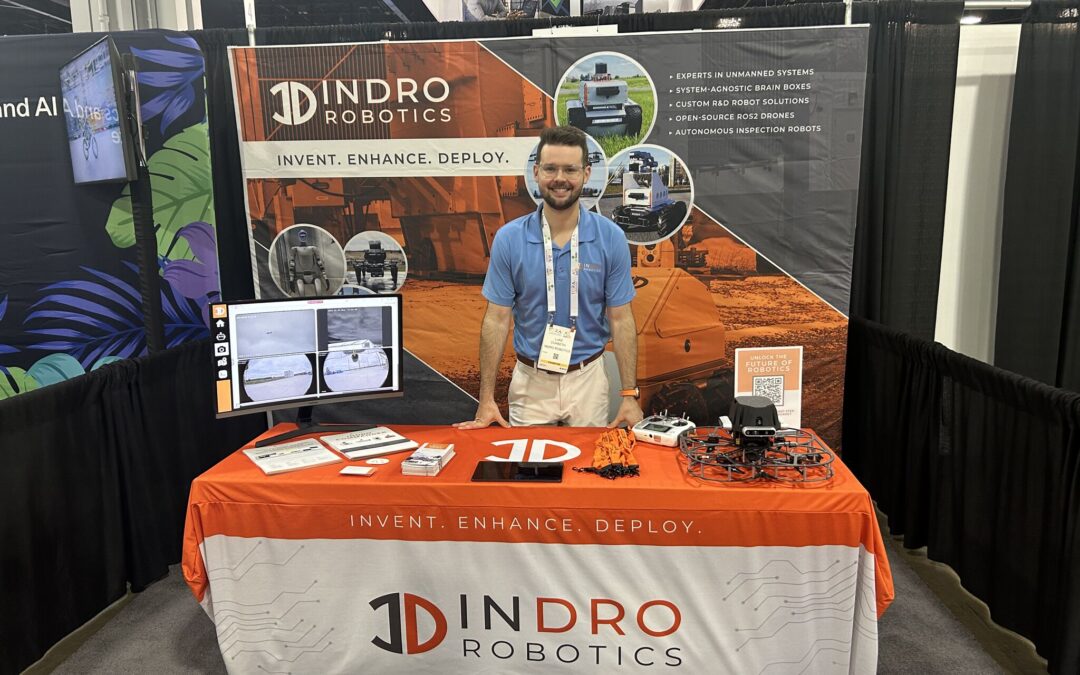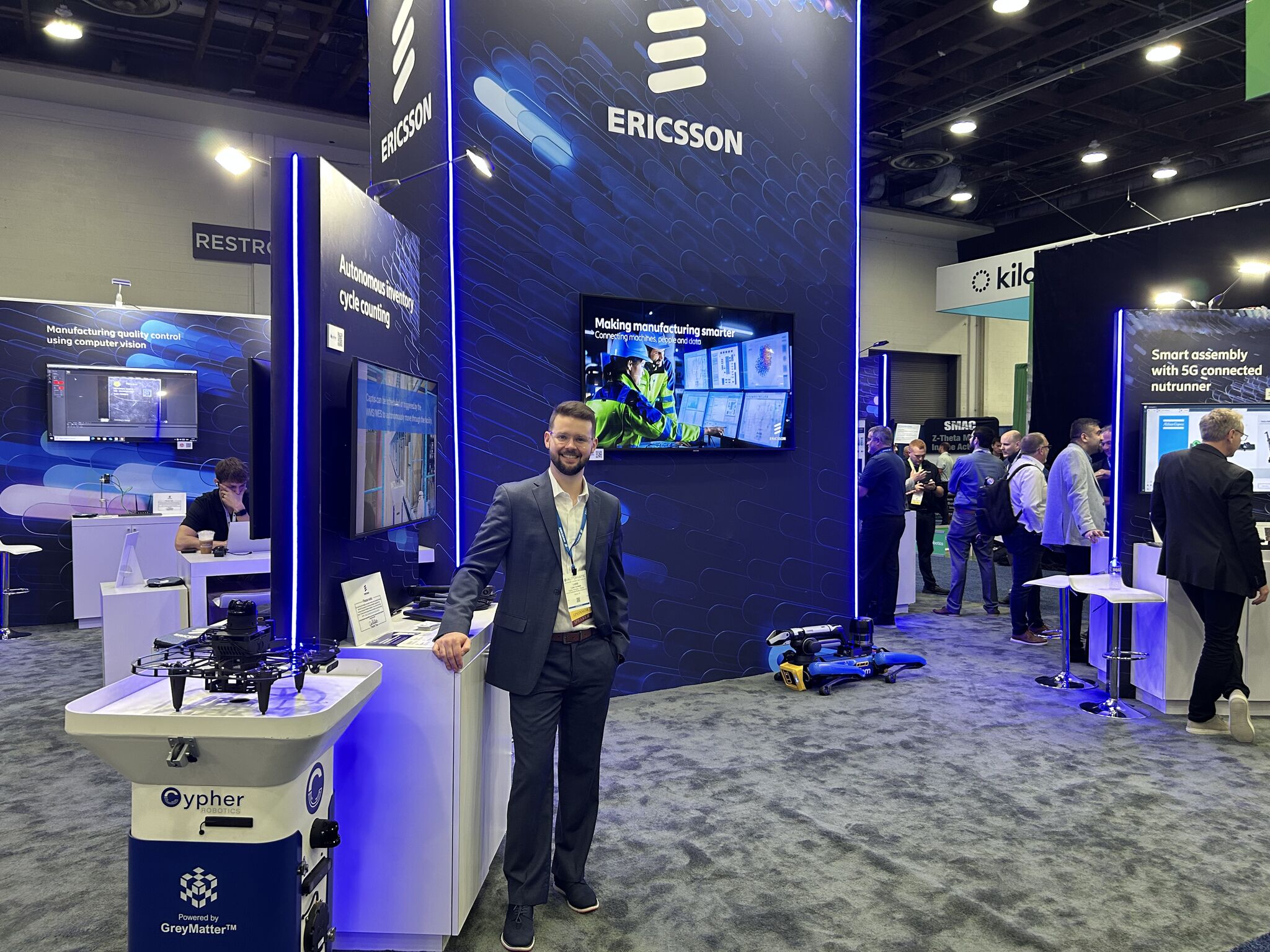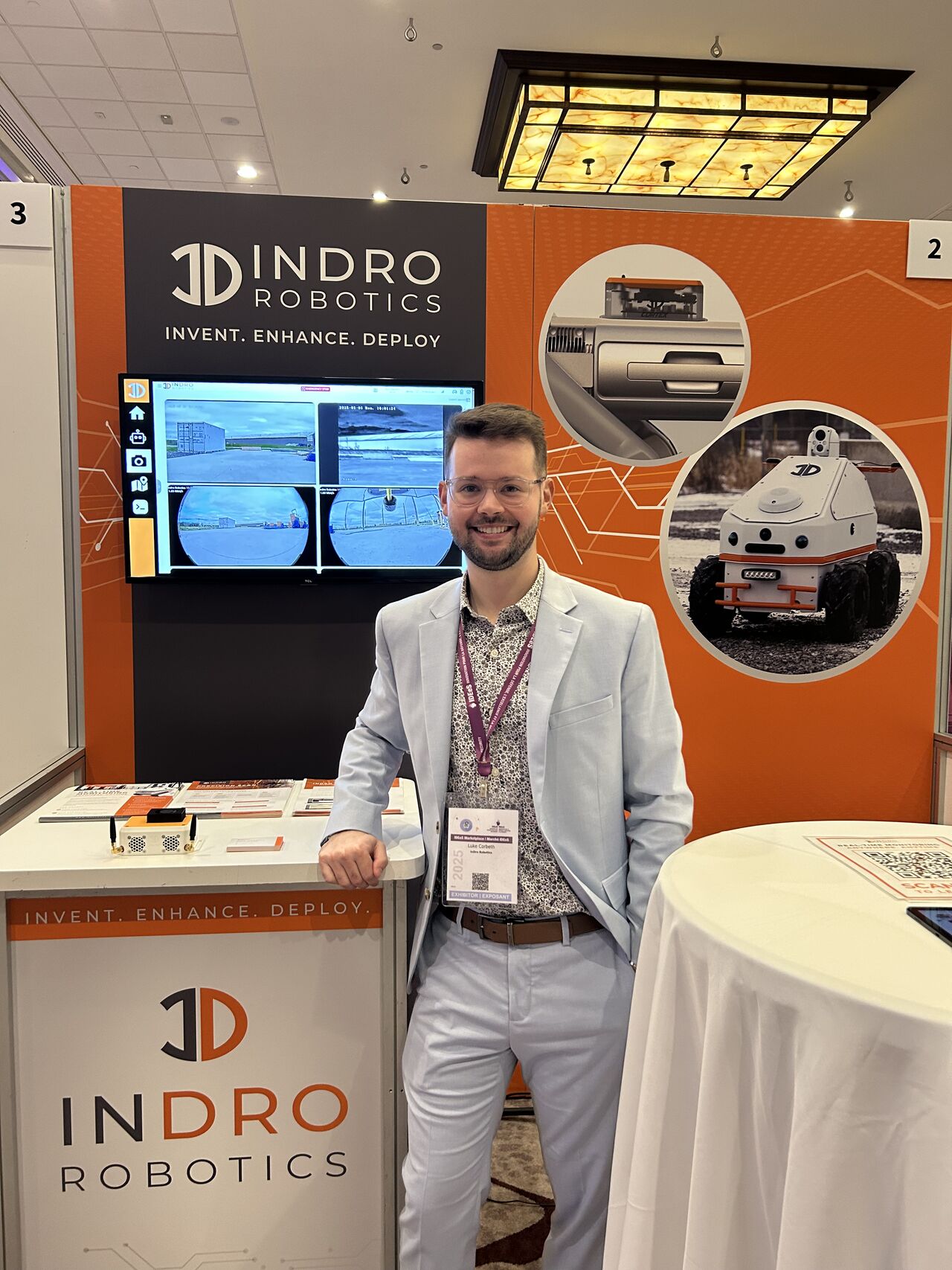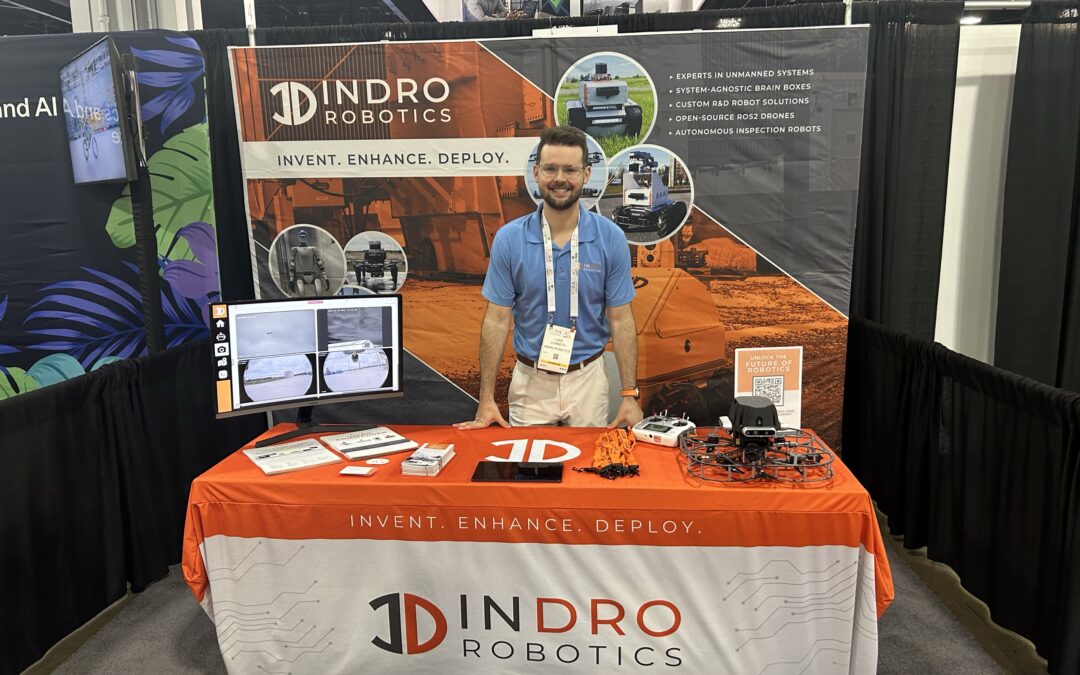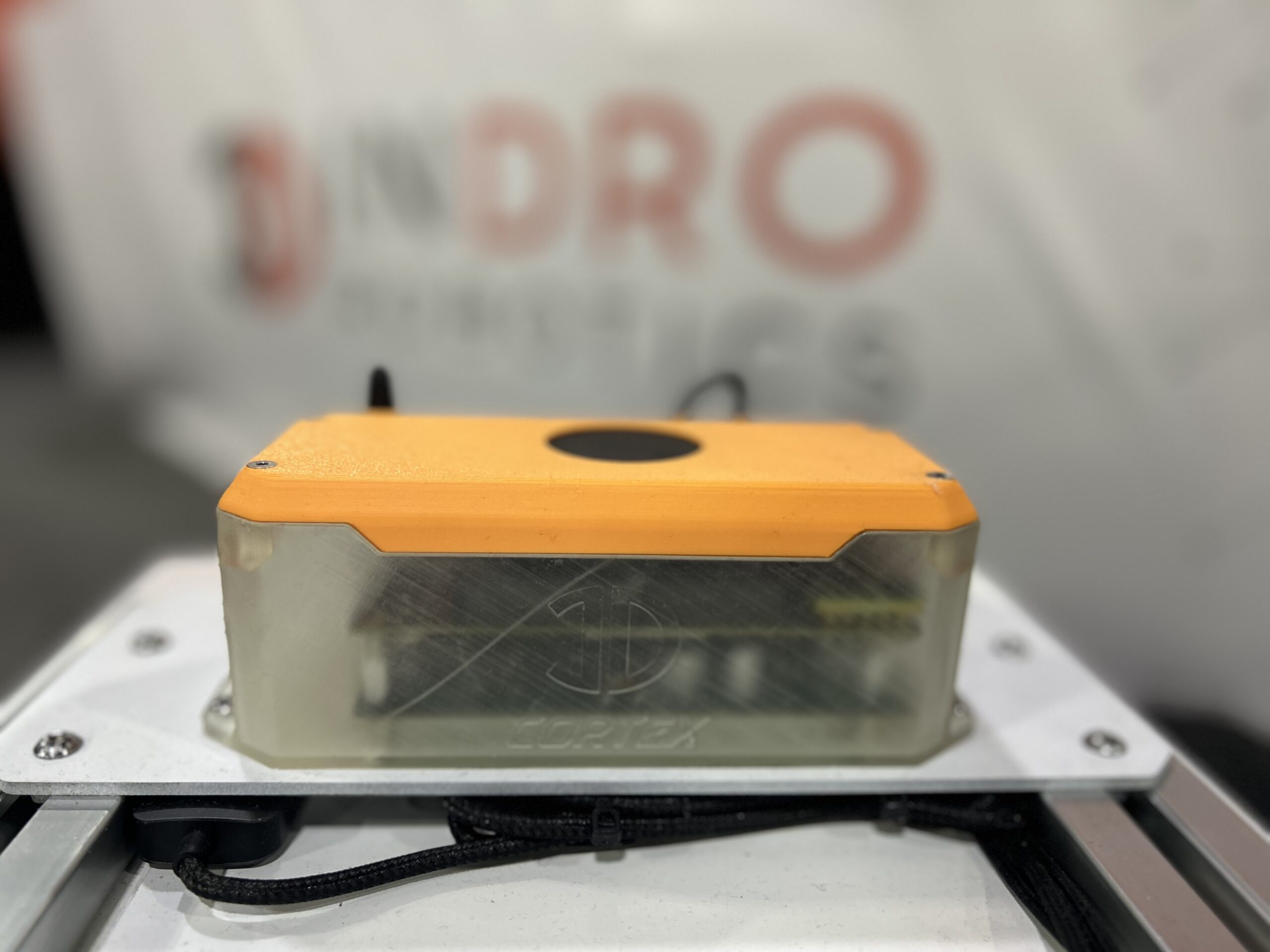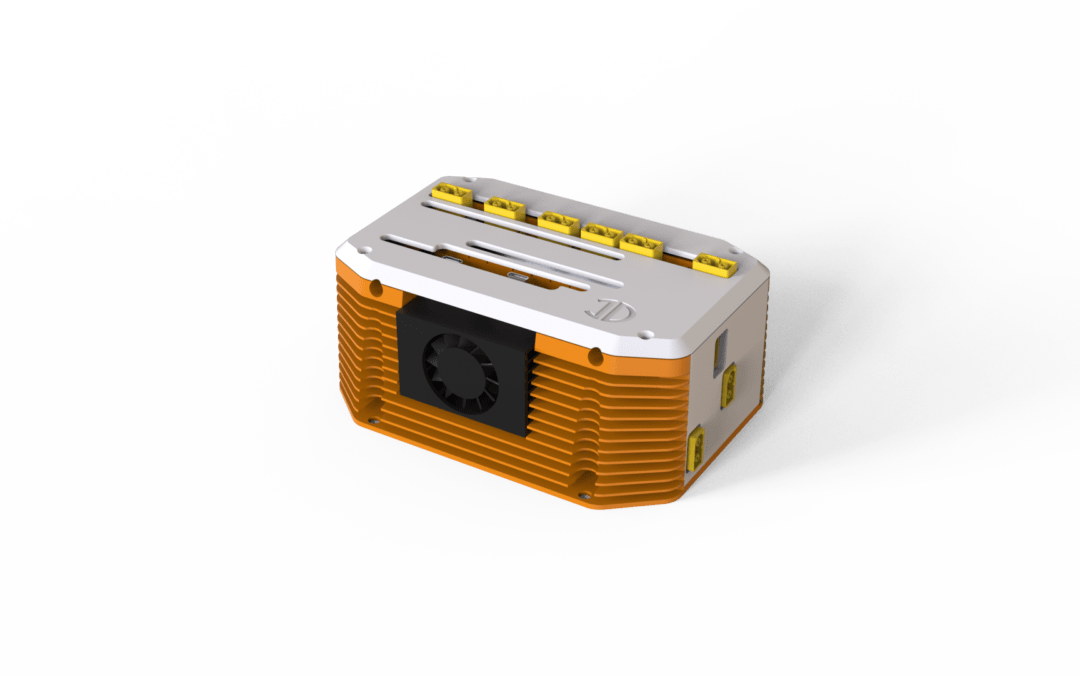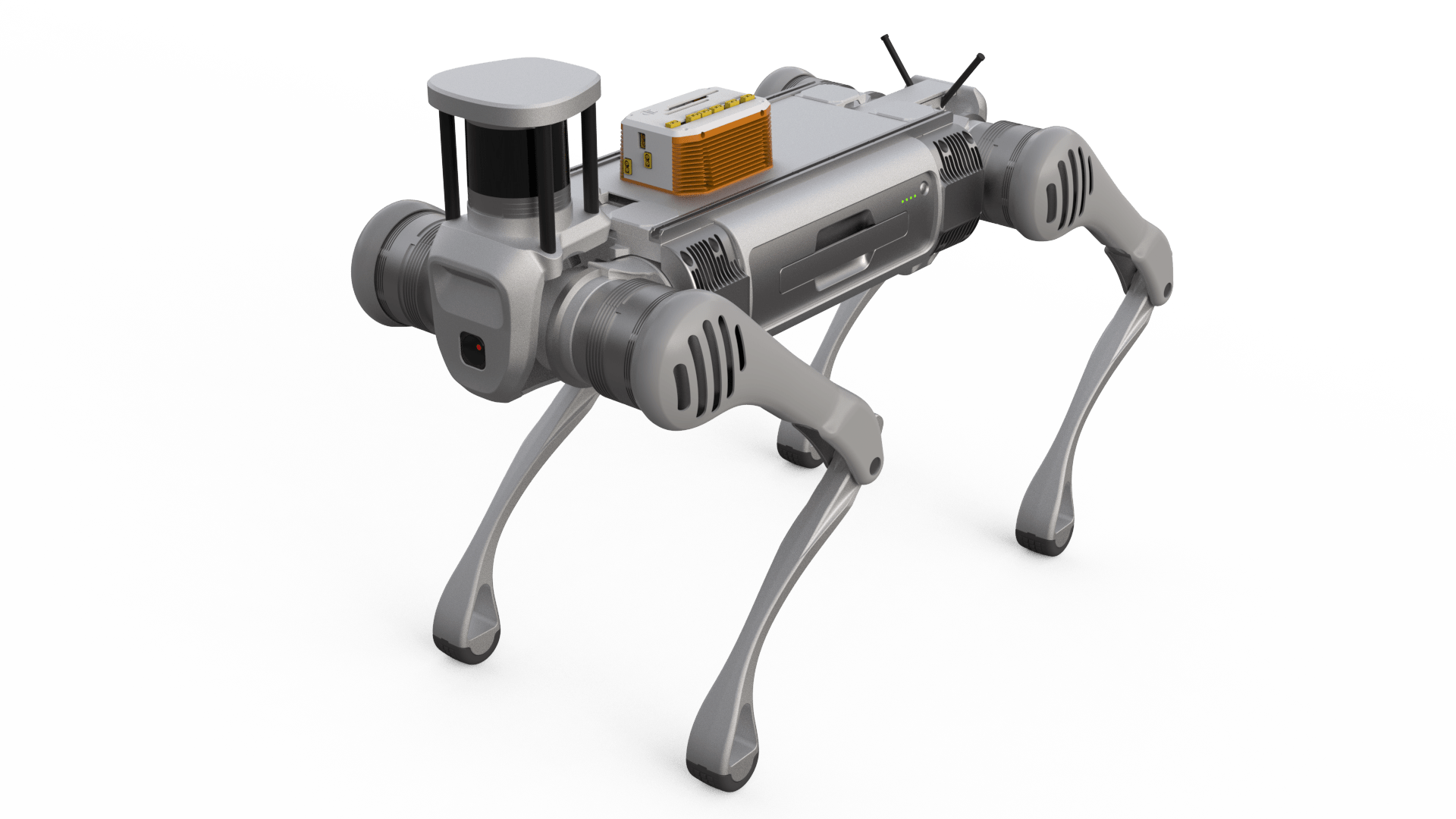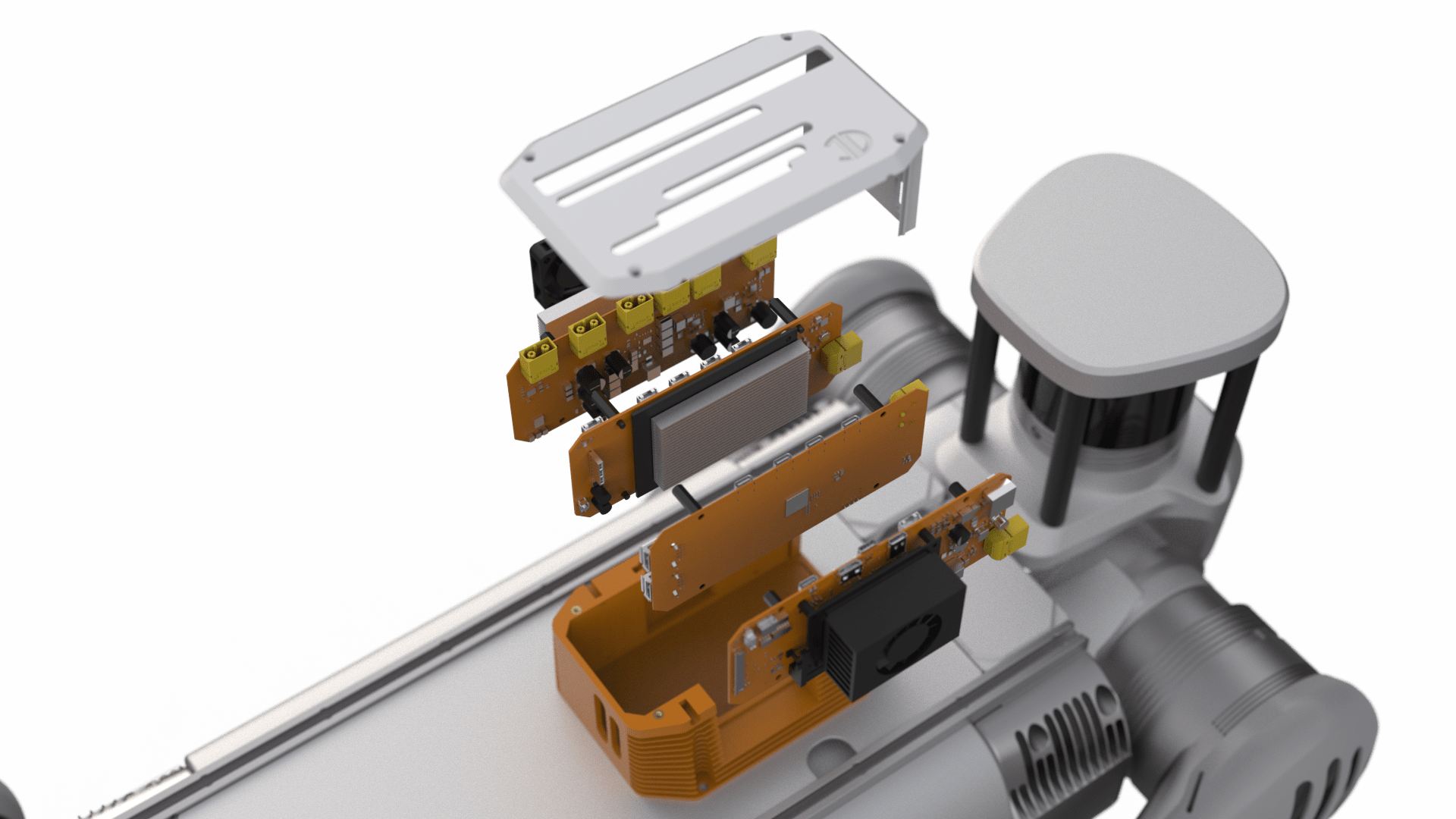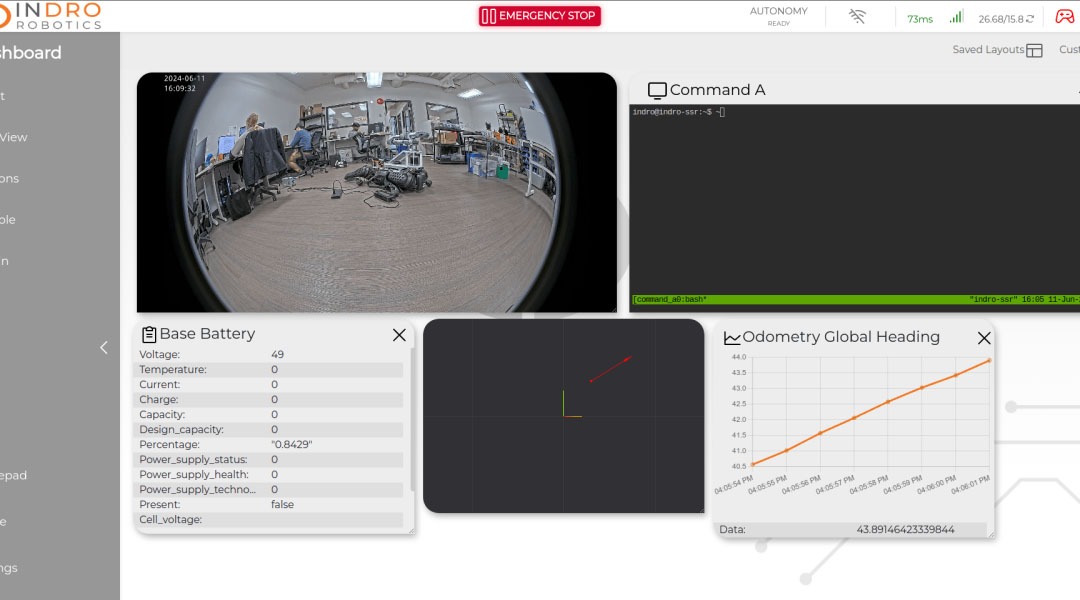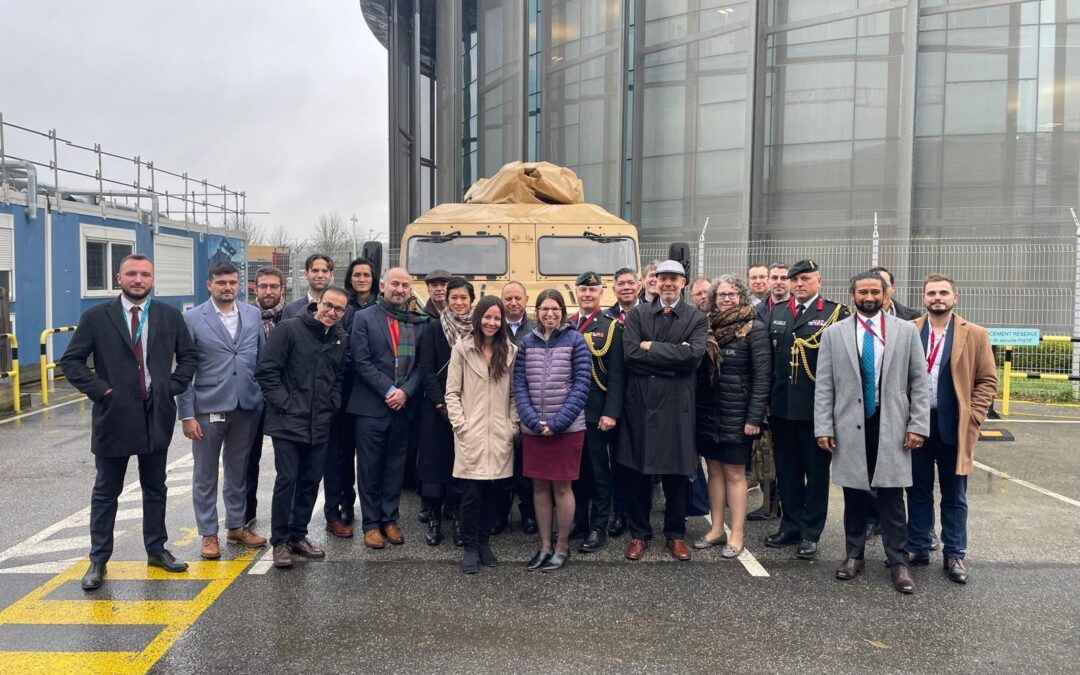
InDro Robotics on high-level Canadian Trade Mission to France
By Scott Simmie
A changing geopolitical world has opened the door to new and potentially massive opportunities for Canadian technology companies through partnerships with European Union countries and contractors.
Earlier this year, Canada signed a Security and Defence Partnership with the EU. And that was the catalyst for a recent Trade Mission to France, where InDro was one of a small group of Canadian technology innovators invited to meet with many of the top defence contractors in the EU.
The Defence and Aeronautics Trade Mission was organised by Montreal’s CENTECH, a non-profit that supports hi-tech companies with high growth potential. It did so in partnership with the National Research Council Canada, The Department of National Defence, and the Délégation générale du Québec à Paris (DGQP).
The trip came at a time of unprecedented developments. Canada recently announced a forthcoming Defence Innovation Strategy, which will rely heavily on Canadian companies for dual-purpose technology innovations that can be applied to defence and sovereignty use-cases. On October 2, Prime Minister Mark Carney announced the launch of the new Defence Investment Agency. And on December 1, the Prime Minister announced that Canada will participate in a program known as SAFE – Security Action For Europe. Canada is the only country outside of the EU with preferential access to this program.
The SAFE program, which unlocks some $244 billion in loans to EU partners (and now Canada) “opens massive new opportunities for Canadian manufacturers to build and export Canadian-made technologies and capabilities,” according to this news release. It’s being described as a “generational opportunity” for Canada’s defence and technology sectors.
“Our participation in SAFE unlocks unprecedented opportunities for Canadian manufacturers to build what our Allies need and what our Forces can rely on. This partnership accelerates our own rearmament while showcasing the world-class capabilities of Canadian workers, engineers, and innovators,” says The Hon. David J. McGuinty, Minister of National Defence.
To be clear, it’s not just about weaponry – but a wide range of dual-purpose technologies that can be used to enhance defence and sovereignty capabilities, including robotics, AI, autonomous systems and much more. And that spells unprecedented opportunities for Canadian technology companies, including InDro Robotics.
Above: The Trade Mission on a site visit at ARQUUS. Below: Defence Minister McGuinty at GCXpo, where he announced a $9.2B commitment as part of Canada’s Defence Innovation Strategy

OPPORTUNITY KNOCKS
With all of these changes on the horizon, the timing was perfect for the Trade Mission to France. InDro Robotics was one of 10 Canadian technology companies on that trip, which included meetings with key EU defence suppliers. These included heavyweights like Thales, Safran, ARQUUS, Exail Technologies and Airbus.
The trip started in Toulouse, with presentations to Airbus before moving to Paris for site visits and meetings with the other companies. The Canadian delegates learned more about the existing and forthcoming technologies these companies are working on, and were able to showcase Canadian innovations that might be a fit.
“We had the opportunity to meet directly with large defence contractors in France to present some of the cutting-edge technologies that we have,” says InDro Founder/CEO Philip Reece. “We were able to showcase technologies that are commercially available and in late-stage R&D – as well as provide a teaser of some of the more advanced technologies we will be releasing in 2026.”
In addition to the formal presentations, there was a more relaxed gathering hosted by His Excellency the Honourable Stéphane Dion, Canada’s Ambassador to France and Monaco. This provided additional one-on-one opportunities for members of the Trade Mission to meet directly with potential EU partners.
“He was quite gracious in hosting us at his residence. That reception allowed us, in a more informal setting, to cement some of the relationships that we had been building with our French counterparts. This, I believe, could result in quite a few developments,” says Reece.
Below: Reception at the residence of The Honourable Stéphan Dion, Canadian Ambassador to France and Monaco.

INDRO SOLUTIONS
We can’t reveal all the details, but we were able to showcase both current and forthcoming InDro innovations – but there was “shock and awe” at some of our solutions. There was widespread interest in our forthcoming InDro Cortex, a tiny brain-box that can be integrated with everything from UGVs to drones to military vehicles, enabling autonomy, remote teleoperation, mission planning, seamless sensor integration and more. There was a lot of interest in Cortex.
“Conversations are underway about how Cortex could potentially be provided in exclusivity to some of the EU defence manufacturers,” says Reece.
But there are other dual-purpose projects slated for release in 2026 – including (with partners) a long-range ISR drone and a UGV with unprecedented capabilities. Details on these are under wraps at the moment, but they caught the attention of several EU contractors.
On this already-exceptional trip. InDro, along with a Canadian modular LiDAR manufacturer BALKO Tech, were invited to present at the Defence Innovation Forum (Forum Innovation Défense, or FID). This is an annual event of the French military which has traditionally focussed on French suppliers.
“This was a tremendous opportunity,” says Reece. “This was the first time foreign companies had been invited to formally present at their symposium. We, along with BALKO Tech, were the only two Canadian companies to be in the very first cohort of international companies to present at the FID.”
Finally, the Trade Mission gave InDro an opportunity to initiate discussions with other Canadian partners on the trip. Those conversations, we believe, will likely lead to future collaborations and partnerships within Canada.
Below: The Canadian delegation on one its site visits

INDRO’S TAKE
The global geopolitical scene has been altered dramatically in recent years, with a very uncertain future ahead. What is clear is that advanced technologies will play an even more critical role in defence, sovereignty and stability – and that governments increasingly recognise this fact. Dual-purpose technologies will benefit the defence, industrial and academic/R&D sectors in both the immediate and long-term horizons.
“We are grateful to CENTECH and the Government of Canada for its support of this recent Trade Mission, and are equally grateful that InDro Robotics was selected to take part,” says company Founder/CEO Reece.
“Meaningful conversations are already underway as a result, and we believe the seeds planted in France will ultimately benefit not only the Trade Mission participants, but ultimately elevate much of the technology and R&D sector in Canada. We’d also like express our thanks to The Honourable Stéphane Dion, as well as Kim-An Nguyen and the team at the Office of the Ambassador.”
There will be much more to come on this down the road. We will keep you posted.

